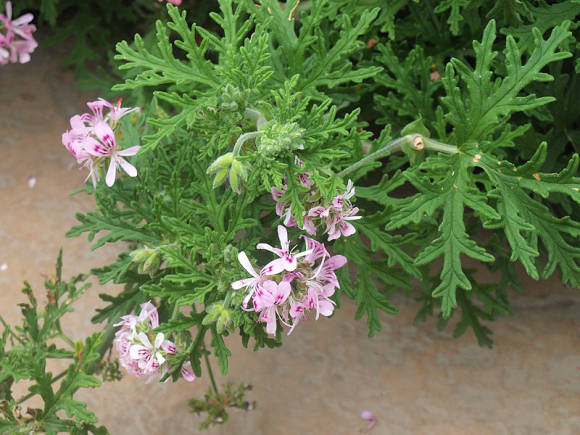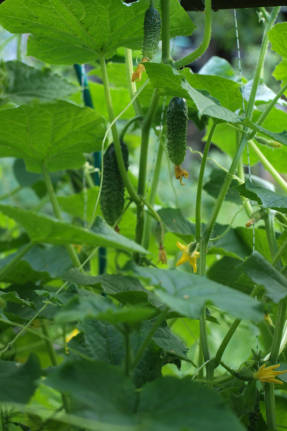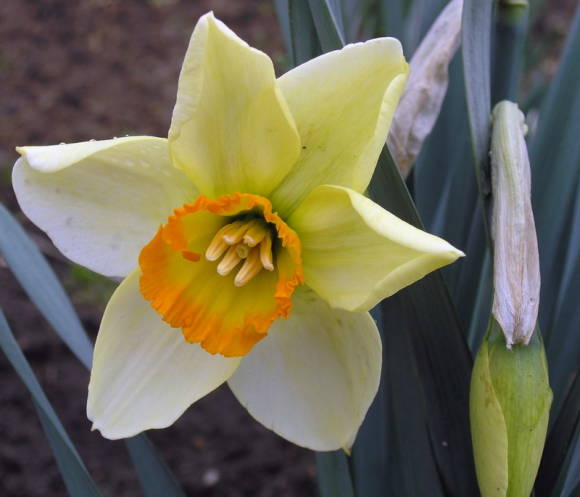The pumpkin family in the plant world is perhaps the most diverse in the form of fruits and their originality. Therefore, it seems to me that few people know about the amazing culture from this family - the serpentine cucumber, or trichozant.
Its main biological features coincide with those of other cucurbits, but according to habits this plant is "more tropical".
Trichozant grows in the countries of Southeast Asia, China, India, Australia. In Russia, it is extremely rare, although it deserves much more attention for its decorative effect and for the high nutritional value of the fruit.

Like many other pumpkin crops, only unripe fruits (zelents) are edible in the trichozant. They are rich in vitamins, iron and other minerals. Its broth quenches thirst well and lowers the temperature. Trichozant is useful for cardiovascular diseases and atherosclerosis.
The fruits of the trichozant are usually eaten fresh (salads). The stems and leaves of the plant are eaten in the same way as green vegetables.
Japanese trichozant(Trichosanthus japonica) Is an annual climbing plant with a thin stem, 3-4 meters long and 3-7 lobed leaves. Its flowers are very interesting, they are unisexual, white; the male flowers are collected in brushes and bloom one at a time, and the female flowers are single.
A flowering plant as a whole is a phenomenon worthy of an artist's brush. Imagine not very large, about 4 cm in diameter, snowflakes with fancy threadlike ends.
On cloudy days and in the evening, snowflake flowers are unusually fragrant, and so that not all flowerbed flowers can compare with them in aroma. Just for the sake of seeing the beauty of these flowers and breathing the air filled with their scent, this plant could be grown.

Another specific feature of this culture is that the flowers of the trichozant open only in the evening, and wither in the morning, which makes them inaccessible to local pollinating insects.
The fruit of a trichozant is serpentine or curved, narrow, cylindrical, with a thin skin, inside contains a soft, tender, slimy pulp. Fruit color is green with lighter stripes or greenish-white. They are often curved and serpentine. When ripe, the fruits acquire bright orange or red tones and look very exotic.
In the process of growth, the fruit often bizarrely bends, which is why the plant got its everyday name "snake gourd".
Conditions for growing trichozant

Trichozant has increased requirements for air temperature and humidity, so it is easier to grow it in greenhouses.
Temperature... This is an extremely moisture- and thermophilic culture (the optimum temperature for the normal life of plants is + 25 ... + 30 ° C), it absolutely does not tolerate even minor frosts. At a temperature of about + 10 ° C, plants completely stop growing, at lower temperatures they die.
Humidity... In addition to soil moisture, atmospheric humidity is also important for it (the optimal relative air humidity is 70–80%). That is why the trichozant is usually grown in summer greenhouses and under film shelters, which allow maintaining the required atmospheric humidity.
Illumination... To grow trichozant on the site, it is necessary to allocate well-lit places, protected from the cold wind.
The soil... It can grow on any soils, but prefers permeable, well-aerated, fertile soils of light texture - sandy loam and light loamy, with a neutral reaction.
Sour and heavy soils need to be improved before growing it. It does not tolerate high groundwater levels. Plants react extremely negatively to cold watering and drafts.
For the cultivation of trichozant, the soil is prepared in advance. In the fall, for digging, they bring in 1 sq. meter of 0.5 buckets of rotted manure or compost, 1 tbsp. spoon of superphosphate and potassium sulfate.And in the spring, the soil is loosened well and applied to 1 sq. meter 1 teaspoon of urea.
Sowing seedlings... In our conditions, it is advisable to grow the trichozant through seedlings. Sowing of pre-prepared seeds is carried out at the very end of April in cups with a diameter of 8–10 cm. The seeds of the trichozant are large, close in size to pumpkin seeds. For their germination, the optimum soil temperature must be above + 20 ° C. At low temperatures, they quickly vanish. Therefore, pre-soaked seeds are kept in a warm place (+ 26 ... + 28 ° C) until pecking.
Seedling care is exactly the same as pumpkin seedling. Seedlings are transplanted to a permanent place in a summer greenhouse or under a film shelter in the last days of May at the age of 32–36 days; the soil must be well moistened with water before planting.

Before planting, holes are made 25-30 cm deep, placing them in one row every 50-60 cm along. In each hole put two liter jars of humus and 1 tbsp. a spoonful of complex fertilizer. Then the holes are watered with warm water and the seedlings are planted to the cotyledon leaves. Immediately after sowing, it is necessary to make a wire trellis in the greenhouse, along which these "children of the tropics" will grow.
You cannot use fresh manure when planting, since when it is introduced and low spring temperatures, the trichozant becomes sick with root rot.
Formation plants under our weather conditions are best done in one stem, leaving two ovaries on the lateral shoots after the first or second leaf (by analogy with cucumbers). Lateral shoots with ovaries after the third and fourth leaves can only be left under optimal weather conditions.
With a good supply of moisture, plants develop a very large leaf area, and a well-developed root system is capable of absorbing moisture not only from the surface layer, but also from deeper layers of the soil.
Trichozant care about the same as for a table pumpkin, but watering is very important for him, especially during flowering and fruiting. But it must be remembered that strong jets of water too easily damage its roots and leaves. Therefore, hose irrigation of plants is undesirable.
The trichozant needs a large amount of nutrients, therefore, usually 5–6 dressings are carried out with mineral and organic fertilizers (most often it is a mixture of nitrophoska and mullein). The first top dressing is carried out at the beginning of flowering, then during the fruiting period, top dressing is repeated every 10-12 days, and the last one - 15-20 days before the final harvest.
Other care includes tying plants to a support and artificial hand pollination, caused by the specifics of flower opening.

Harvesting... It is advisable to harvest young fruits in technical ripeness, preventing them from overgrowing. In addition, this technique increases the yield of fruits.
Fruits left to ripen have a very small number of seeds (up to 10 seeds in one fruit). This is also one of the reasons that makes it difficult to spread this interesting culture.
And this is interesting. The trichozant has an interesting feature: if all pumpkin plants seek support with their antennae and then twist them tightly around it, then the trichozant, not finding something to grab onto, can simply "stick" with its antennae to the film.
"Ural gardener", No. 7, 2020









